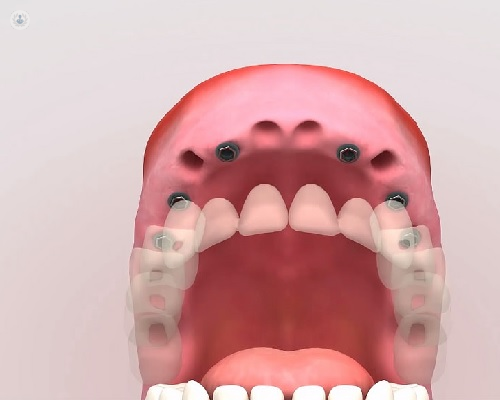dental Implantology
Written by:What are and what characteristics do implants have?
Implants can be defined as artificial roots that replace lost teeth. They are made of a pure titanium material, material that is used in other fields of medicine such as traumatology, with a fairly broad history. The replacement of the teeth by implants takes a process in which they are fixed of physical and chemical marera. It is what we call a process of osseointegration.
In what circumstances is it appropriate to resort to implants?
It is good to resort to implants nowadays almost in any case, given that both surgical and material advances are quite important. We could define them in partial edentations, people who have lost a tooth or several teeth, total edentations, who have lost all the pieces and then we would do a little bit of emphasis also in the people who are carriers of removable prostheses that move them to all sides , and with this they can be fixed by a minimum of two implants depending on what situation.
The first thing for all this would be to do a radiological study, mainly what is a scanner, in which we would see the length and width of the available bone. If we did not have the bone sufficiently available we would resort to a previous regeneration or to the same intervention of the implants according to the case. In an edentation of the lack of a tooth, what is done is a small incision, the implant is placed, a cap of healing and it is left to rest there until it osteointegre, in a minimum period of 2 to 6 months according to the case.

Then we move on to the prosthetic phase in which different measurements are taken and a room is placed that will join the implant to the future crown. In the case of, for example, missing several pieces, before we would resort to the traditional bridge in which it was necessary to file adjacent pieces and place the missing piece in between. In this case, for example, 3 pieces are missing. 2 implants are placed on the ends and the intermediate piece is hanging. In cases in which there is no tooth can be replaced by a certain number of implants that will, as we said before, the bridge phase also, depending on whether it is in the lower or upper jaw there will be a certain number. And then also note in patients who wear prostheses for quite some time, removable prostheses, generally total, which move them to all sides, there with a minimum of 2 implants is often enough for these patients to have comfort when chewing, Speaking comfort and aesthetic comfort.
What advantages do implants offer?
The main advantages are:
- It is not necessary to carve the adjacent pieces.
- You do not have to do root canals.
- They improve chewing.
- They improve the aesthetics.
- Prevent premature bone resorption.
- Fix removable prostheses.



